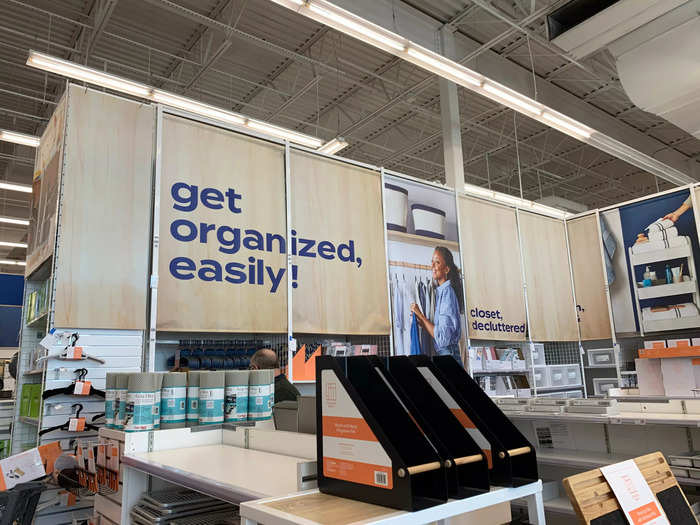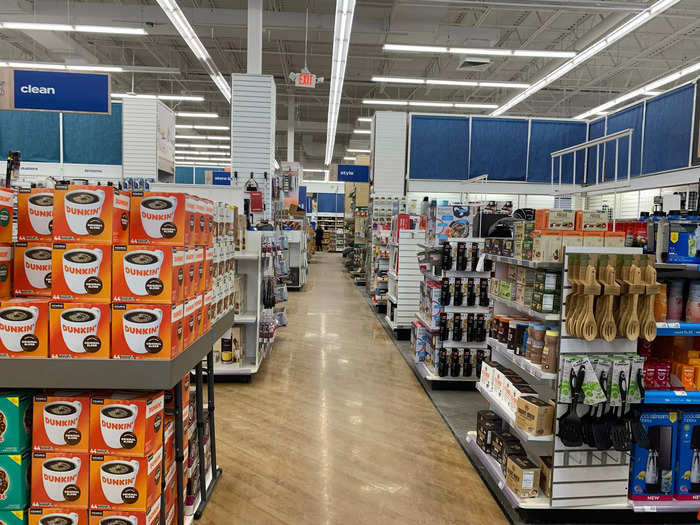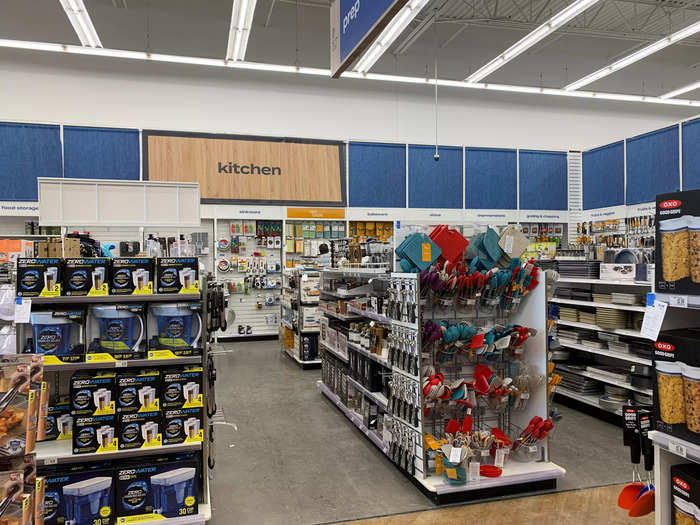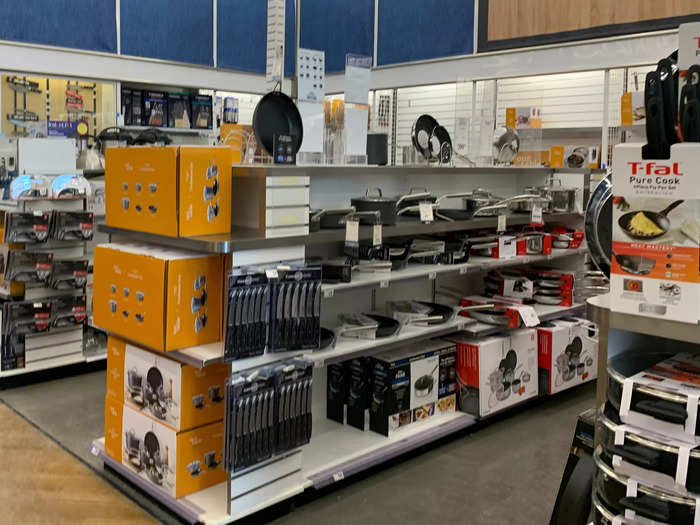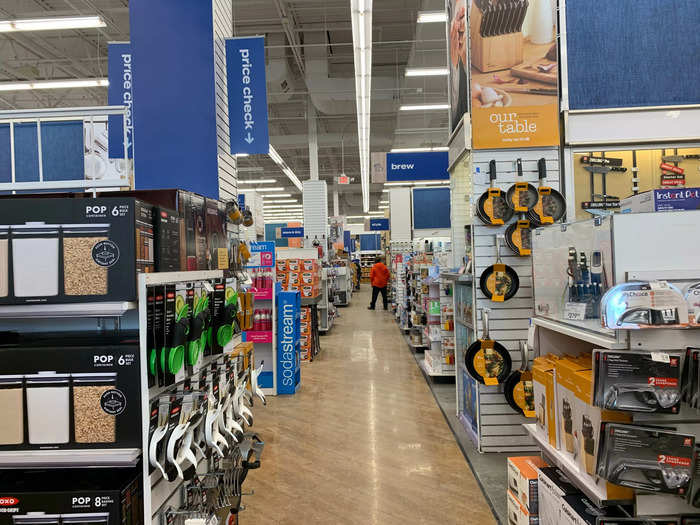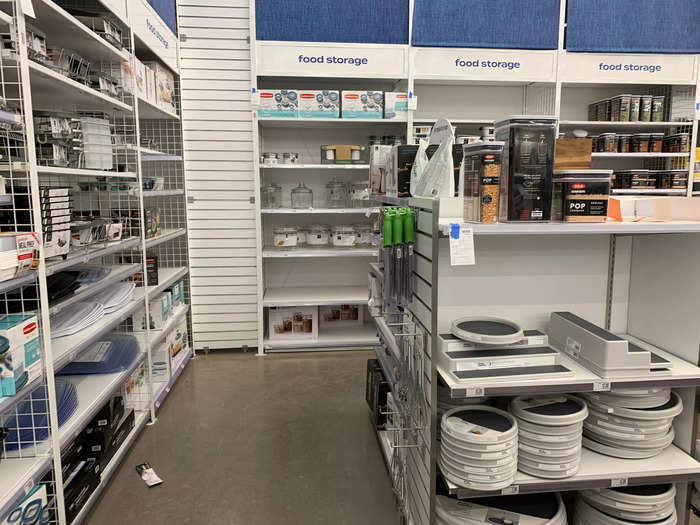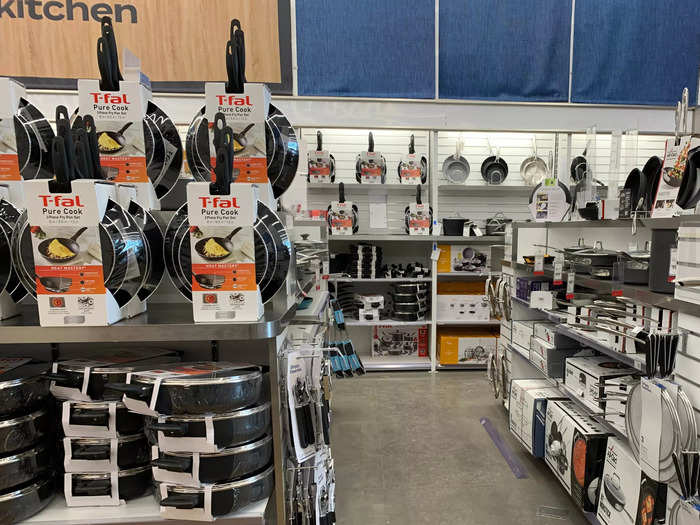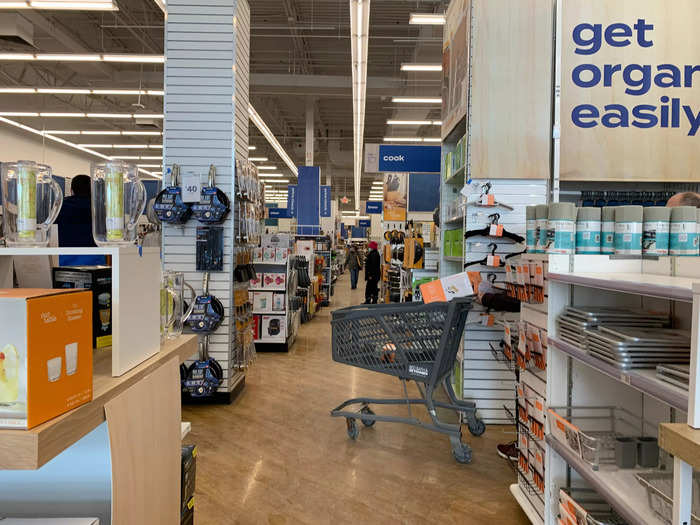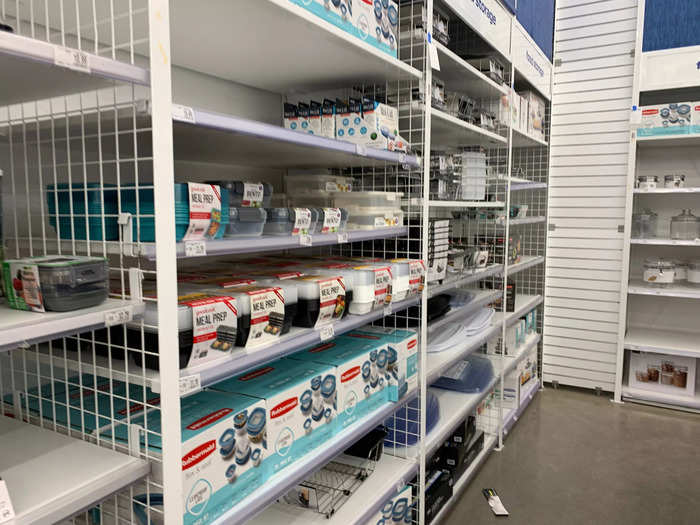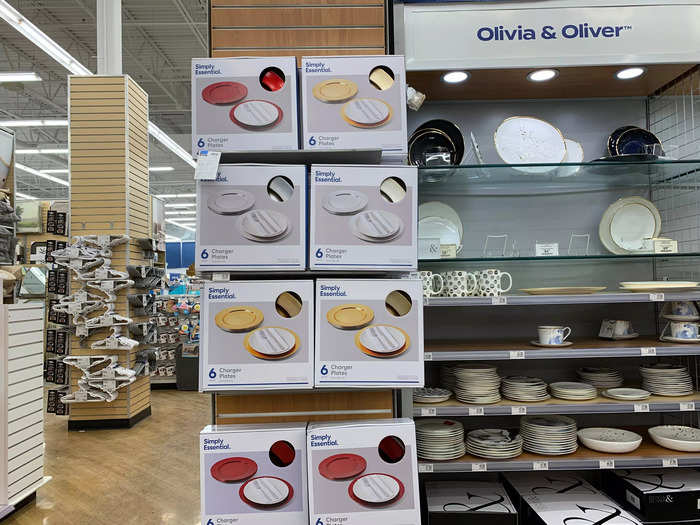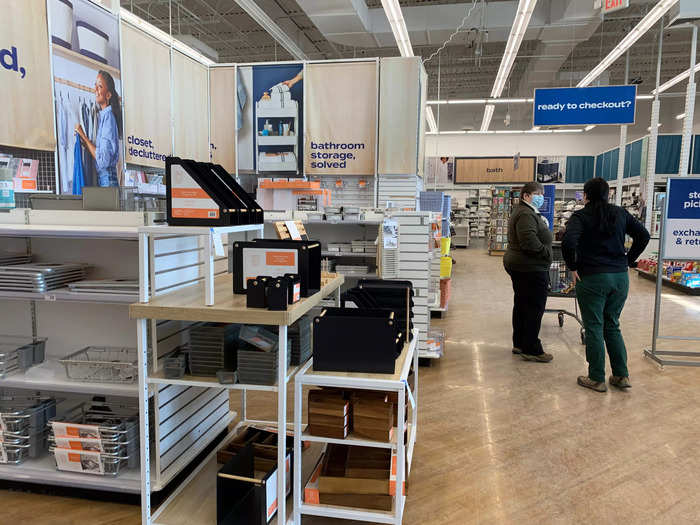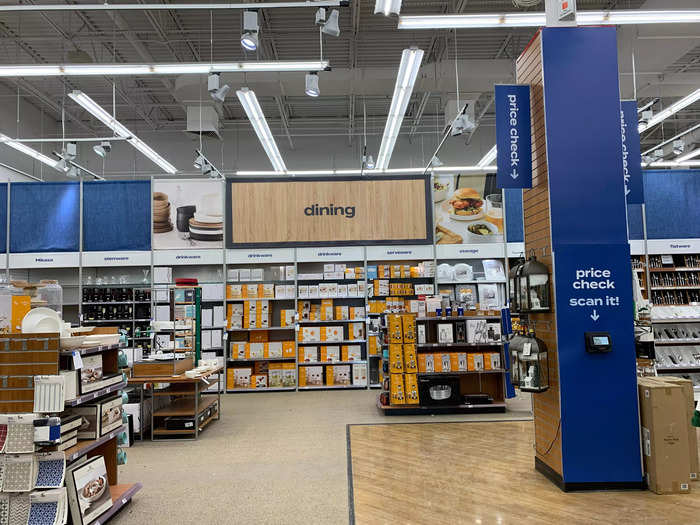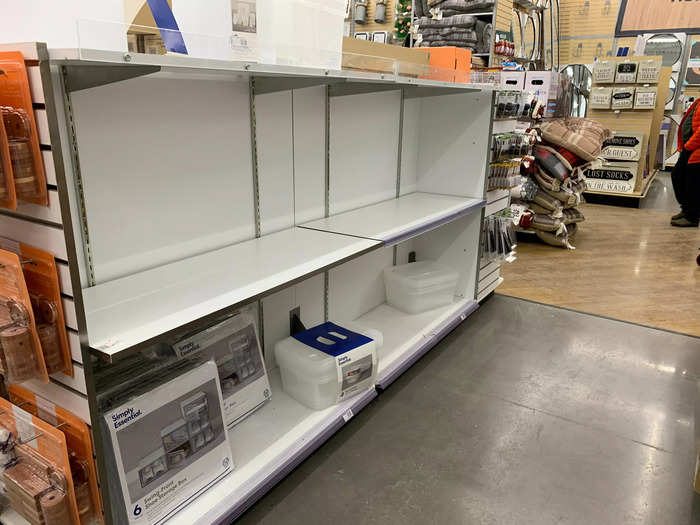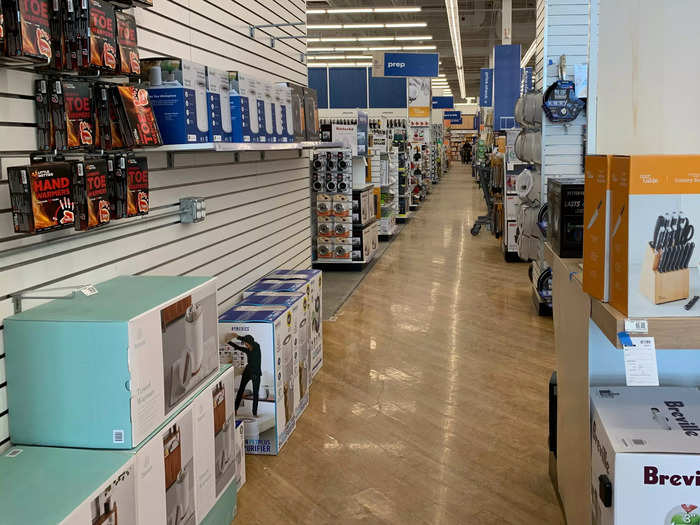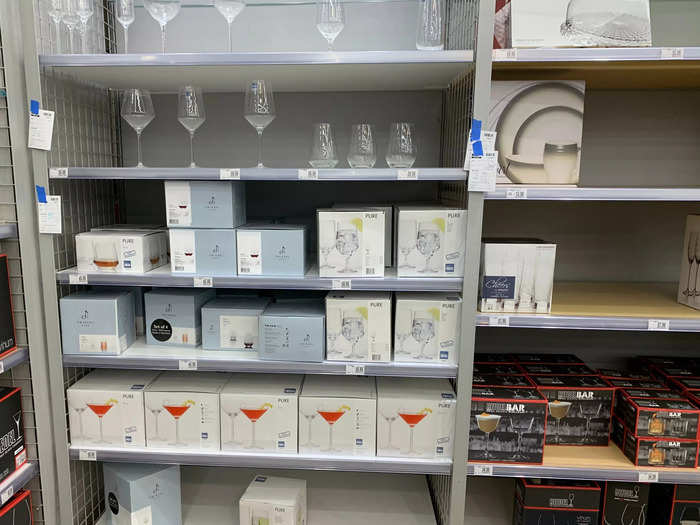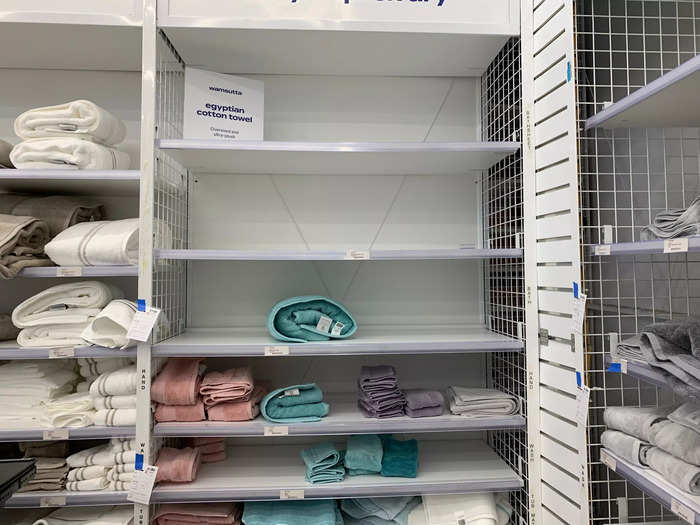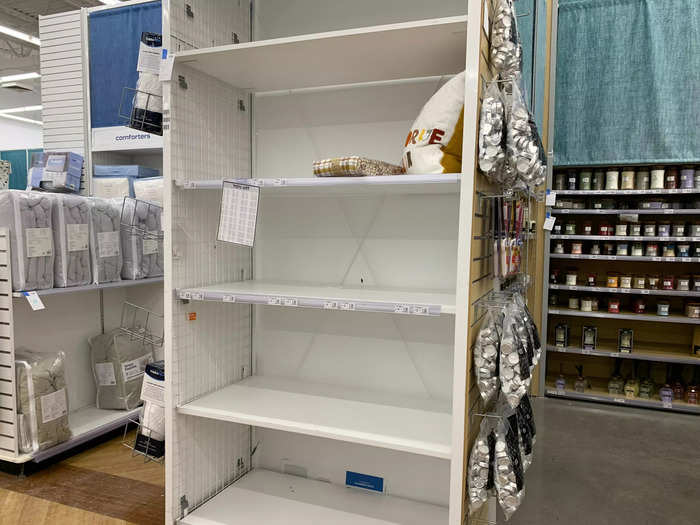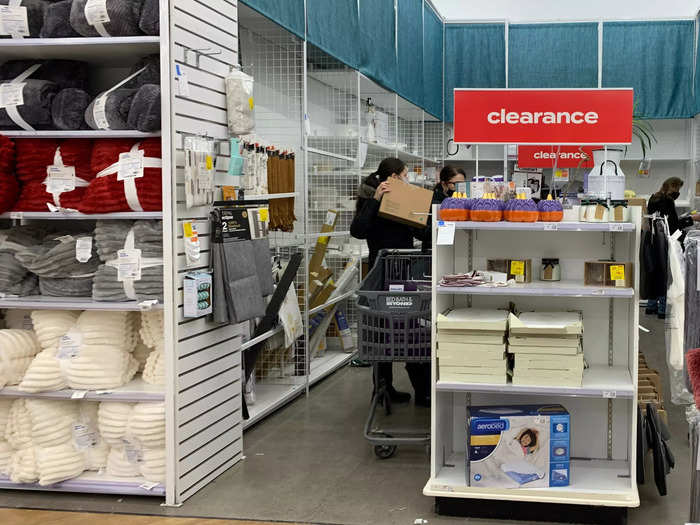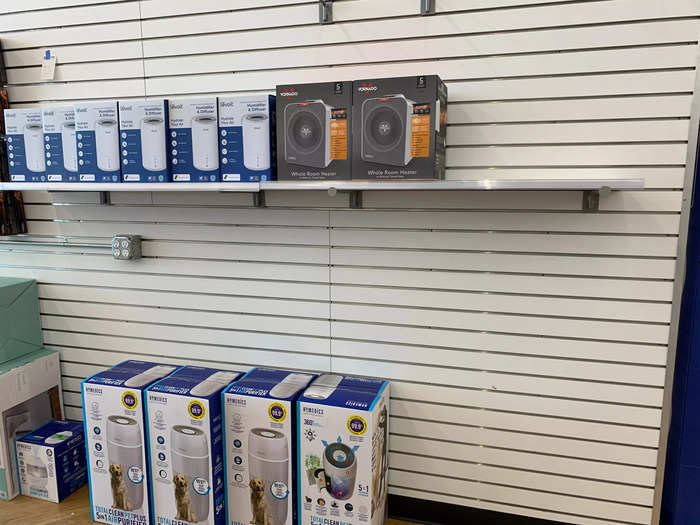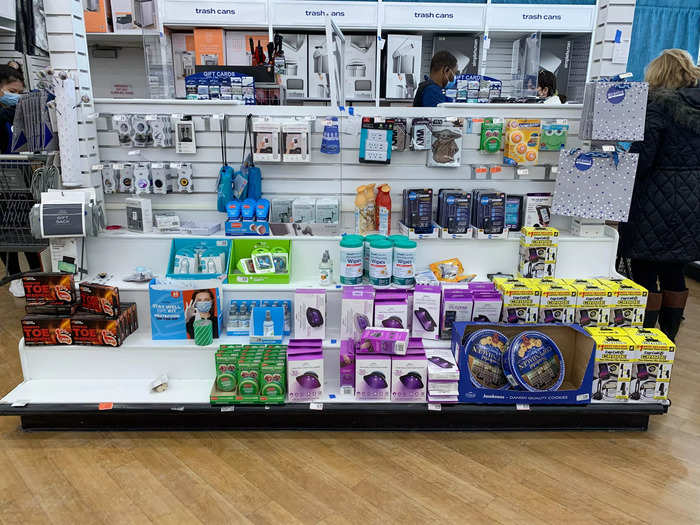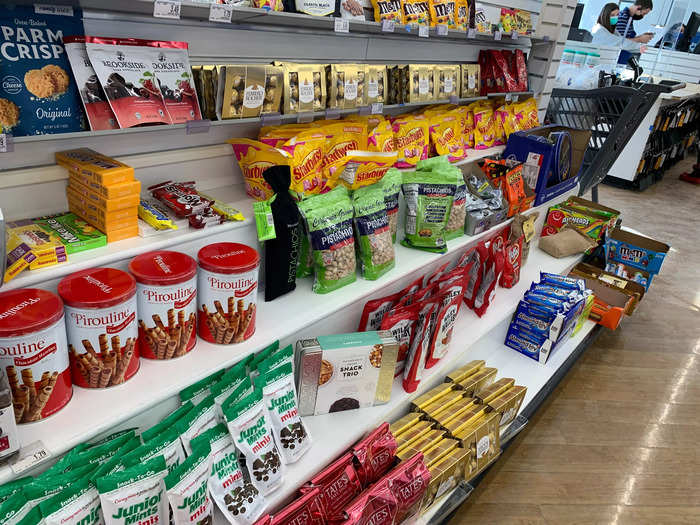Bed Bath & Beyond wanted to prevent overpacked shelvesREUTERS/Emily Elconin
- Bed Bath and Beyond is updating stores to be less cluttered.
- A store in Rochester, New York had less varied merchandise and looked more organized than in the past.
Bed Bath and Beyond is a massive home goods store that customers rely on for everything from wedding registries to dorm room decor.
Mary Meisenzahl/Insider
The chain got a huge boost early in the pandemic as homebound Americans focused on home improvement.
Mary Meisenzahl/Insider
In March 2020, Bed Bath and Beyond implemented "the biggest change in its product assortment in a generation."
Mary Meisenzahl/Insider
New CEO Mark Tritton made it his mission to reduce inventory and declutter stores.
Mary Meisenzahl/Insider
Selling too many varieties of a single item leads to "purchase paralysis," Tritton told The Wall Street Journal.
Mary Meisenzahl/Insider
The chain planned to spend up to $400 million on store remodels and other upgrades, including wider aisles to better show off the merchandise the chain chose to stock.
Mary Meisenzahl/Insider
The plan also included minimizing and organizing merchandise so items were no longer stacked up to the ceiling.
Mary Meisenzahl/Insider
The location I visited in Rochester, New York wasn't as pared down as images of the flagship New York City store.
Mary Meisenzahl/Insider
Still, the gigantic store appeared more organized, with a smaller inventory than my previous visits over the years.
Mary Meisenzahl/Insider
Most shelves were stocked, but the variety of merchandise seemed less varied.
Mary Meisenzahl/Insider
For example, there were just two types of air fryers on display, but the display itself was still massive and extended nearly to the ceiling.
Mary Meisenzahl/Insider
The air fryers were an exception, though, and most displays I saw no longer extend so high up.
Mary Meisenzahl/Insider
The entire store felt a bit more open, with more space between aisles and displays.
Mary Meisenzahl/Insider
The location was mostly well stocked during my visit, but I did notice some empty shelves.
Mary Meisenzahl/Insider
Minimizing inventory and launching private-label brands contributed to some of the chain's supply chain challenges, The Wall Street Journal reported.
Mary Meisenzahl/Insider
That became a pain point for the chain over the holiday season, when its top 200 bestselling items were in short supply, leading to a loss of $100 million in sales.
Mary Meisenzahl/Insider
Empty shelves seemed mostly to be limited to home items, not appliances.
Mary Meisenzahl/Insider
The empty shelves were a bit jarring in contrast to how organized the rest of the store was.
Mary Meisenzahl/Insider
The small clearance section near the checkout counters was the messiest area of the store.
Mary Meisenzahl/Insider
It was also the busiest area, showing that at least some customers may not mind the disarray the store was once known for.
Mary Meisenzahl/Insider
The checkout looked the same as always, with a messy selection of chargers, knickknacks and other seemingly random items near the register.
Mary Meisenzahl/Insider
This location also didn't have the self checkouts the chain plans to add, just the same snack assortments and registers.
Mary Meisenzahl/Insider

